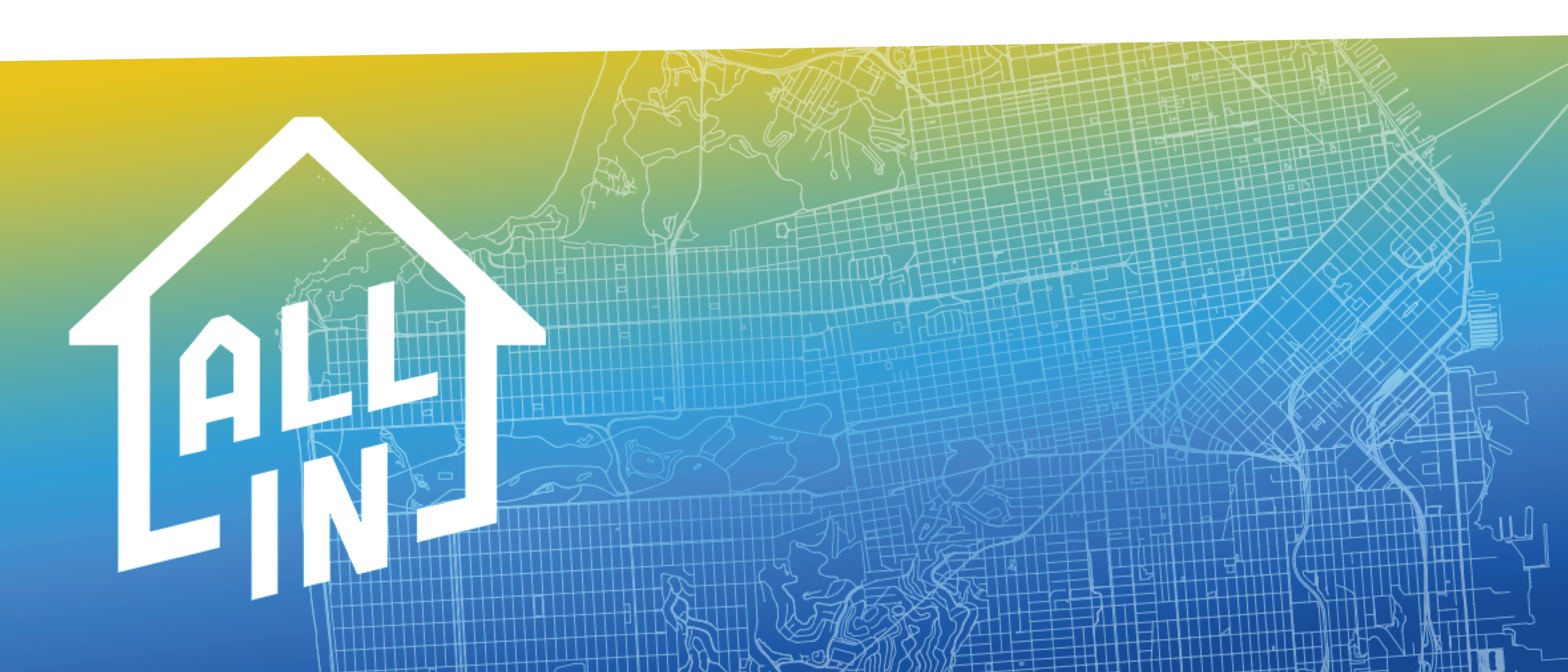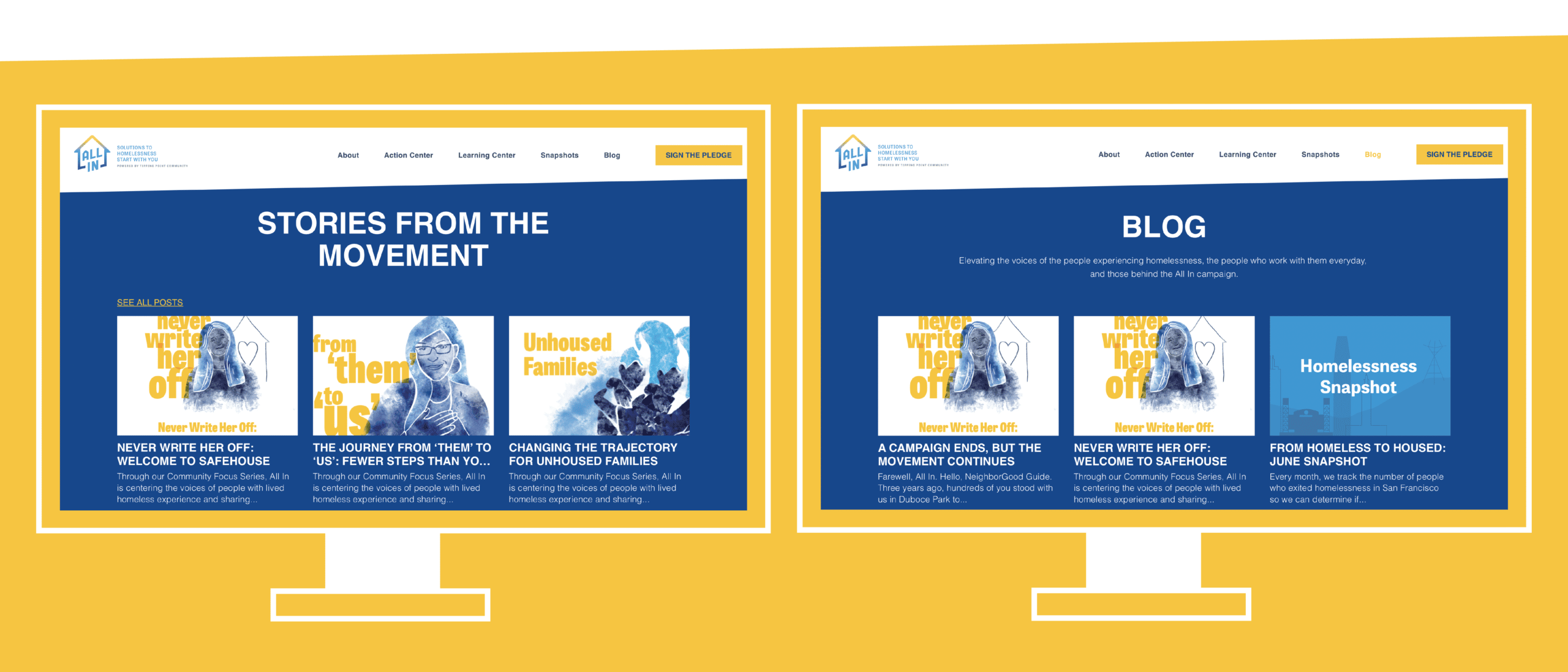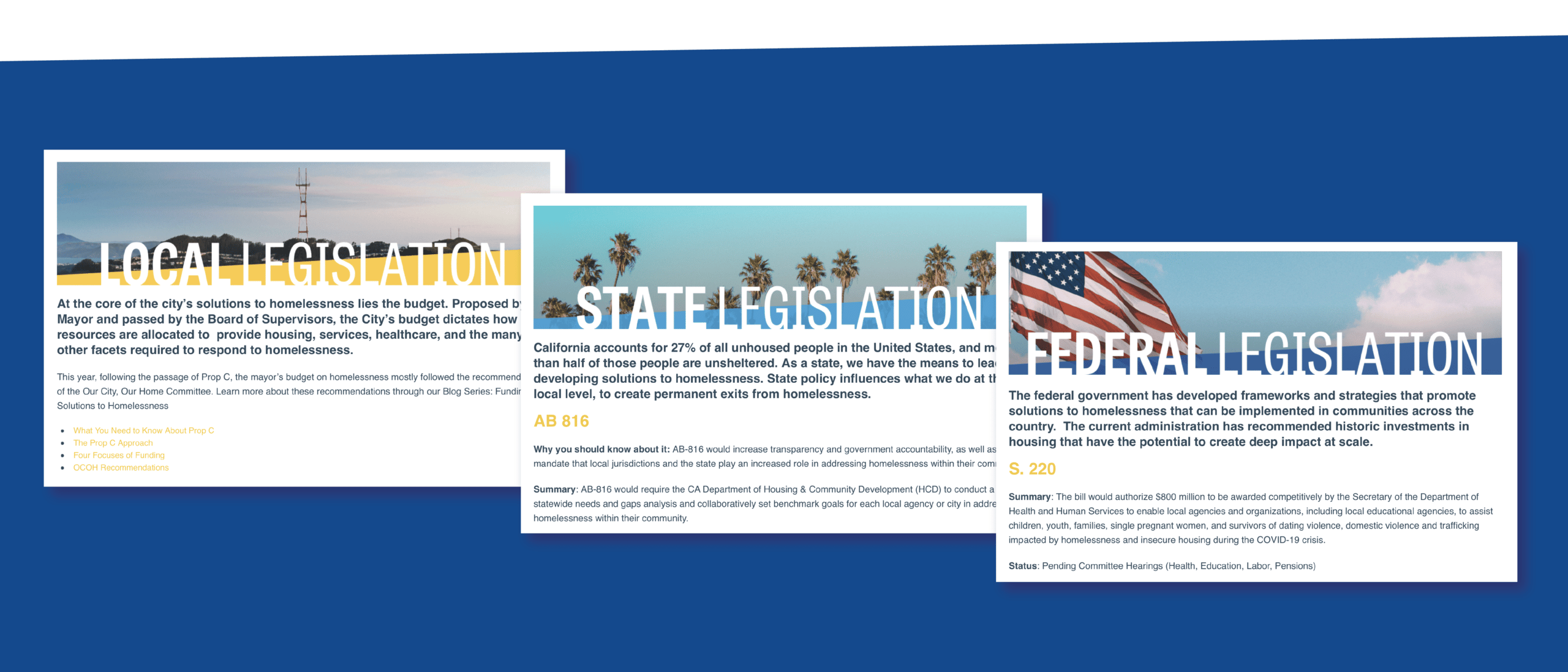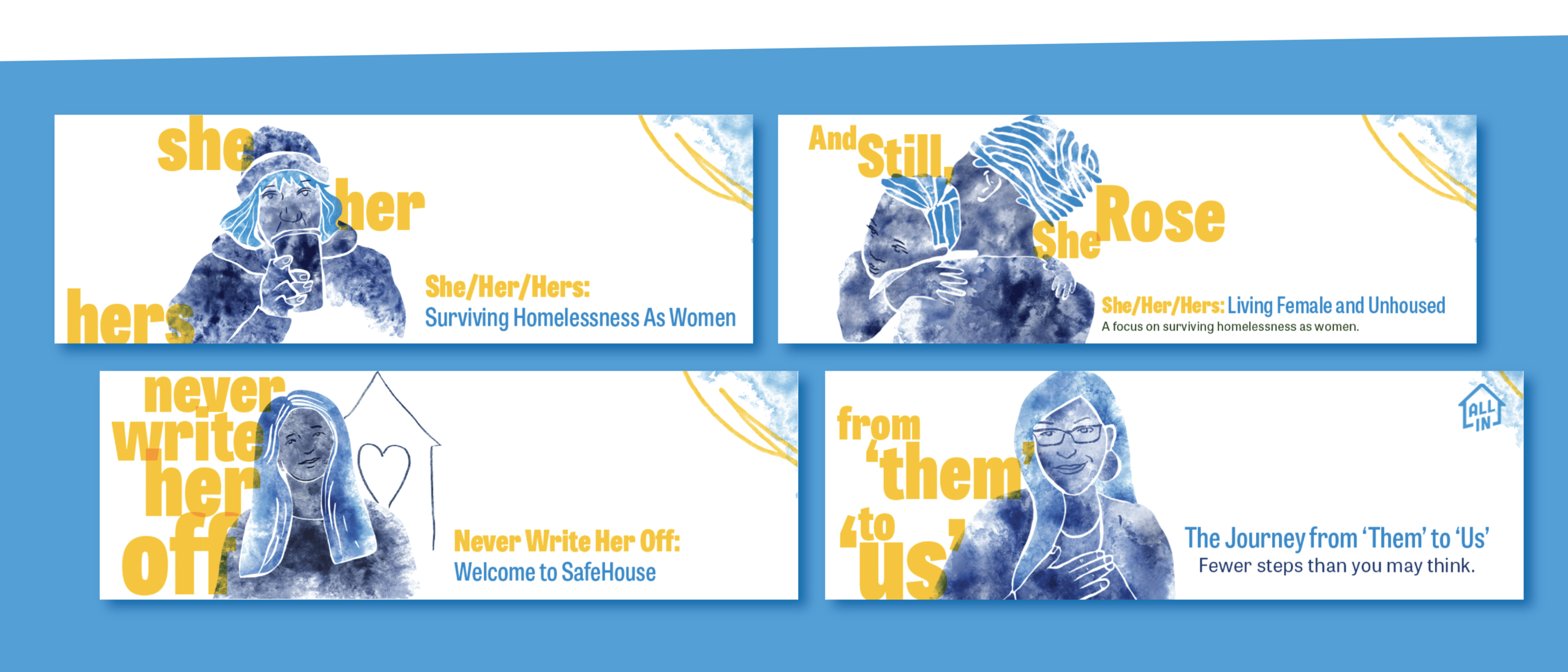
Overview
The Tipping Point Community is a nonprofit, grantmaking organization dedicated to advancing the most promising poverty-fighting solutions.
In 2020, Media Cause joined their Chronic Homelessness Initiative as their strategic and creative partner for the All In Campaign to mobilize San Franciscans around solutions to homelessness.
Tipping Point Community came to us with a tall order: help them create a strategy to raise awareness and build support about innovative and proven solutions to homelessness in a city deeply divided on the issue and how to approach it. The goal was not to solve homelessness as a whole but rather to get people to see the issue differently—and get them to act.
We had a number of significant obstacles to overcome. It’s impossible to live in San Francisco and not be aware of homelessness, but residents have developed some apathy and skepticism about what might actually be done to make sure everyone who lives in the City also has a home.
We had to confront deeply entrenched public perceptions—unhoused neighbors were being defined by their lack of a permanent home, with many believing that they brought their misfortune upon themselves and that there is nothing the City can really do about it. These narratives were further enforced by a lack of transparency and publicly available data around which solutions were actually successful and having a real impact.
All of this, plus a complex and ever-changing political ecosystem, culminated in a massive barrier to changing the hearts and minds of San Franciscans and building real, public support for proven solutions to homelessness.
We forged a path forward in this difficult and complex landscape through a powerful counter-narrative that cast a vision and outlined a collective and people-centered response to a systemic issue. At the same time, we highlighted what was already working and provided meaningful actions for people to be a part of the tangible progress underway.
We accomplished this through a cross-channel campaign strategy that centered around elevating the voices of people with lived experience of homelessness, developing and targeting audience personas based on different levels of engagement with the issue, and building relationships on and offline.
This resulted in a strong and growing community, united by their support for solutions to homelessness, inspired by the progress in creating real change, and ultimately driven by real concern for their neighbors, including those currently living unhoused.

It was clear from the onset of the campaign that we faced an uphill battle in changing the hearts and minds of San Franciscans. The contentious debate around homelessness locally made it particularly difficult to break the issue down in a way that did not immediately turn off potential supporters or paint a picture so bleak that it discouraged people from taking action.
We were intentional about leading with stories that reframed homelessness as a community issue rather than one rooted in individual failures while also sharing positive, uplifting news that created a sense of hope around what was possible.
Our event, ‘What Does Home Mean To You?’ brought community members together to listen to the stories of people who have lived unhoused in San Francisco—placing our constituency as agents of change and consciousness-raisers in the campaign.

From the beginning of our work with Tipping Point, we were cognizant we’d be speaking to a constituency with varied levels of knowledge about homelessness—but we also knew they’d have a strong sense of the reality since they encounter it every day.
Our challenge was to put together a narrative change strategy that aimed to transform people into community members with a stake in seeing their neighbors housed.
We created content series’ to educate San Franciscans on solutions to homelessness, including a Legislative Digest, Prop C 101 (a breakdown of a local proposition), and multiple articles on solutions currently in place to create a space for jargon-free and easily accessible content on the topic.
While Our Blog and Learning Center were the hub for this content, we broke it down further into digestible and shareable carousels on social media that people could then share with their networks. With paid media to support these content series, we infiltrated the local market, arming our supporters with the information they needed to take their support to the next level.
The focal point of our campaign was the people we aimed to serve: Unhoused San Franciscans.
We knew that to put a face to an often faceless issue, we had to tell real, human stories that wouldn’t just change peoples’ minds, but touch their hearts.
We implemented a strategy that not only leaned into the stories of lived experience but specifically to the stories of people who are often left out of the narrative—like women of color or LGBTQ+ youth. We intentionally portrayed unhoused residents in the campaign imagery, centering around their humanity, highlighting their resilience, and maintaining their dignity. In our community series, we narrowed in on the different populations that experience homelessness, the unique challenges, and the community-specific solutions required.

We developed on-ramps for supporter involvement at varying levels of commitment throughout the campaign. We presented a unique “way in” by emphasizing different elements of the story: the problem, the people, and the possibilities.
We crafted three distinct personas and three creative concepts for each piece of this larger narrative. These concepts connected homelessness to other issues, illustrating that there is no finite definition of ‘homeless’ and driving people to ask hard questions about homelessness and genuinely listen to the answers. This strategy culminated in the creation of The NeighborGood Guide, an evergreen, self-standing tool. The Guide uses storytelling to underscore points of human connection, amplify the voices of people who have experienced life unhoused, and lead users through their own unique journey in identifying their role in creating solutions to homelessness in San Francisco.
The strategies proved to be effective in grabbing attention—we reached a staggering 5.5M people on social media, a 260% increase in audience.